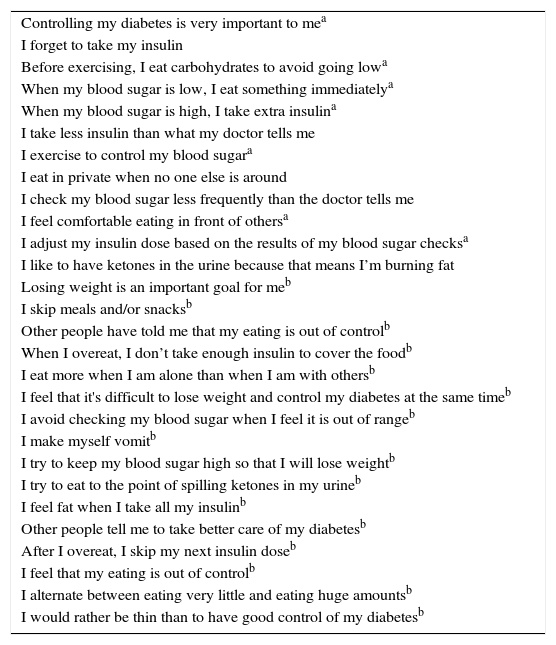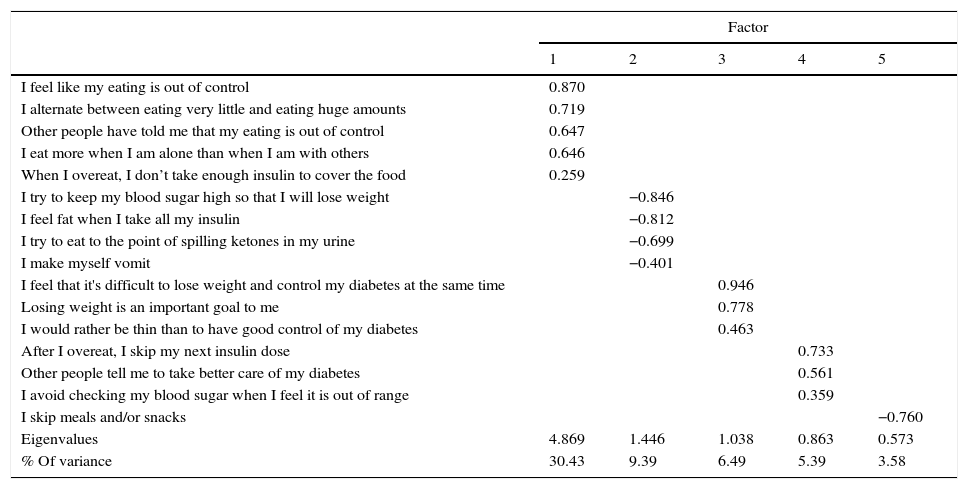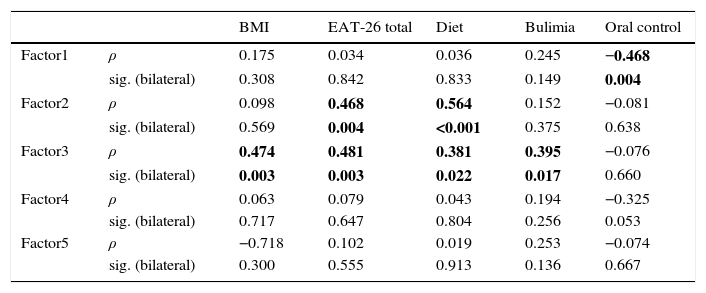The treatment of type-1 diabetes mellitus (T1DM) requires changes in patients’ eating habits and lifestyles which could lead to the development of an eating disorder (ED). An early detection of these disorders in subjects with T1DM is necessary. However, there is no specific questionnaire concerning the presence of an ED in these patients.
ObjectivesTo translate and validate for the Spanish population a specific questionnaire aimed at detecting the risk of onset of an ED on a sample of subjects with T1DM. To analyze its agreement with its shortened version and with the gold standard tool, EAT-26.
Material and methodsCross-sectional study. The study population consisted of 112 adults with T1DM. The EAT-26 tool and DEPS-R questionnaire were used to detect subjects at risk for developing ED. In addition, several characteristics such as weight, height, BMI, age and age of onset were assessed by means of self-administered questionnaires, in order to study their correlation with test scoring.
ResultsStructural properties of the tests were evaluated through methodological procedures aimed at calculating reliability and validity. The translated and adapted version had a high consistency in both its complete and summarized version (α=0.821). The test-retest also yielded consistent results (intraclass correlation coefficient 95.8% for EPAD and 92.3% for EPAD-R). The factor analysis yielded 5 factors: (1) Eating attitudes; (2) Bulimic behaviour; (3) Weight control; (4) Avoidance, and (5) Restriction.
ConclusionsWe have developed a questionnaire in Spanish capable of identifying the risk of onset of a specific ED in patients with T1DM. The EPAD-R questionnaire detected 10% more cases and different ones than those detected by the EAT-26 test. It is necessary to use specific screening tools to correctly identify eating disorders in patients with T1DM.
El tratamiento de la diabetes mellitus tipo 1 (DMT1) exige modificaciones de los hábitos alimentarios y estilos de vida que pueden conducir a desarrollar trastornos de la conducta alimentaria (TCA). Es necesaria la detección precoz de estos trastornos en sujetos con DMT1. Sin embargo, no existe un cuestionario específico sobre la presencia de TCA en este tipo de pacientes.
ObjetivosTraducir y validar al español un cuestionario específico para detectar el riesgo de TCA en sujetos con DMT1. Analizar su concordancia con una versión resumida y con la herramienta de referencia EAT-26.
Material y métodosEstudio transversal. La muestra estuvo compuesta por 112 adultos con DMT1. Para la detección del riesgo de TCA se utilizaron los cuestionarios EAT-26 y DEPS-R. Características como el peso, la talla, el IMC, la edad y la edad de inicio fueron evaluadas.
ResultadosSe evaluaron las propiedades estructurales de la prueba a través de procedimientos metodológicos para calcular la fiabilidad y la validez. La versión traducida y adaptada demostró una consistencia muy elevada entre la versión completa y la resumida (α=0,821). La prueba test-retest también resultó consistente (coeficiente de correlación intraclase de 95,8% para EPAD y de 92,3% para EPAD-R). El análisis factorial resultó dar 5 factores: 1) Actitudes alimentarias; 2) Conductas bulímicas; 3) Control de peso; 4) Evitación, y 5) Restricción.
ConclusionesHemos desarrollado un cuestionario en español capaz de identificar el riesgo de TCA específico para sujetos con DMT1. El cuestionario EPAD-R detectó un 10% más de casos y estos fueron diferentes a los detectados por el EAT-26. Para identificar correctamente los TCA en diabéticos es necesario utilizar herramientas de cribado específicas.











